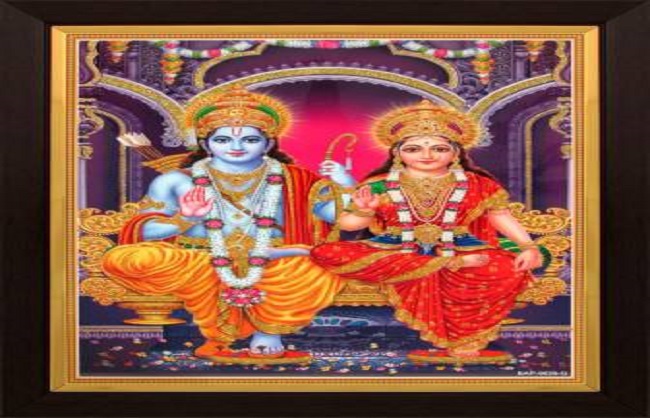The clamour for Siya- Ram Mandir at Ayodhya

By Dr Birbal Jha
Lord Ram, who is also known as the son-in-law of Mithila where, after breaking the Shiva’s vow, which was a condition for wedding, was married to Goddess Sita, the daughter of Janak, then king of Mithila.
The people of Mithilanchal comprising several districts of Bihar are clamouring for the nomenclature of the new temple to be built should be ‘Siya Ram Mandir’ or ‘Ram Janaki Mandir’ (Janaki is yet another name of the goddess).
With the unanimous five member bench of the Supreme Court pronouncing its historic verdict on Ayodhya Janmboomi issue on 9th November 2019, it is very clear that a Mandir, not a masjid will be rebuilt on the site where Lord Ram as incarnation of Vishnu was brought into the world in the treta epoch.
At the birthplace existed a temple which was converted into a mosque in 1528 under the rule of the emperor Babar will see a restoration in a way as late as in 2019. In the 1928 edition of the Faizabad Gazetteer well recorded this fact of the destruction of the ancient temple of Ram on the site.
Remarkably, the British Rule which documented all these was in place during the publication of the Gazetteer, which also brought on record before the apex court. However, the apex court in its ruling has mentioned the historical wrongs cannot be corrected by courts. The Supreme Court Ayodhya Verdict running through 1045 pages, in biblical nature may be regarded as legal magnum opus which every citizen of the country must possess, study and understand.
It has taken several verses of the Ramayana which is now recognized and certified by the apex judicial boy of the country. It should be incorporated into the curriculum of higher education in the country. This is a great example of tolerance practised in Hinduism over eras. What the wrongs committed by then emperor Babar is ,however, being settled by the courts of law at the present moment.
Hindus have always demonstrated a great sense of faith in judicial processes in the country. It reaffirms the world view that Hindu Dharma is a great philosophy, practice for mankind, human civilisation and co-existence. The bonding and sense of living together are the basis of Indian cultural ethos and values.
At the same time, female members of society are pointing their fingers towards the approach of male chauvinism. They have begun to raise the voices for equality in all aspects. Fairly good!
However, this is India wherein Hinduism, the pairings like Radha-Krishna, not Krishna-Radha, Siya- Ram or Sita Ram, not Ram Siya are enchanted in all rituals all the time. What lies in Indian cultural ethos is to give due respect to women folks. The Manu, an ancient legal text among the many Dharmasatras of Hinduism at its verses 3/56 say, (Yatra naryastu pujyante ramante tatra devtah, yatraitastu na pujyante sarvastatrafalah kriyah). Meaning where women are worshipped, there lives God. Wherever they are not worshipped, all actions fail. Such are the Indian verses, virtues and practices.
No yagya, the sacrament is supposed to be complete unless both of male and female partake in the rituals and ceremonies. “A house without a woman cannot be run properly. She often handles the work at home and even outside efficiently.
Hence, attaching due respect to the female completes the life cycle. Moreover, creation of mankind is subject to both partners- male and female”, says Gauri Rani from Bihar settled in Delhi with her boutique. The naming of the upcoming temple needs consideration given that Indian verses, philosophy and recognition women’s role in human life and the concept of social equilibrium.
Moreover, it is more significant when the government has begun to lay emphasis on women education and their participation in every walk of life, be it jobs, politics, administration, the management or business houses.
(Dr Jha is Chairman of Mithilalok Foundation working for socio- cultural and economic development)






